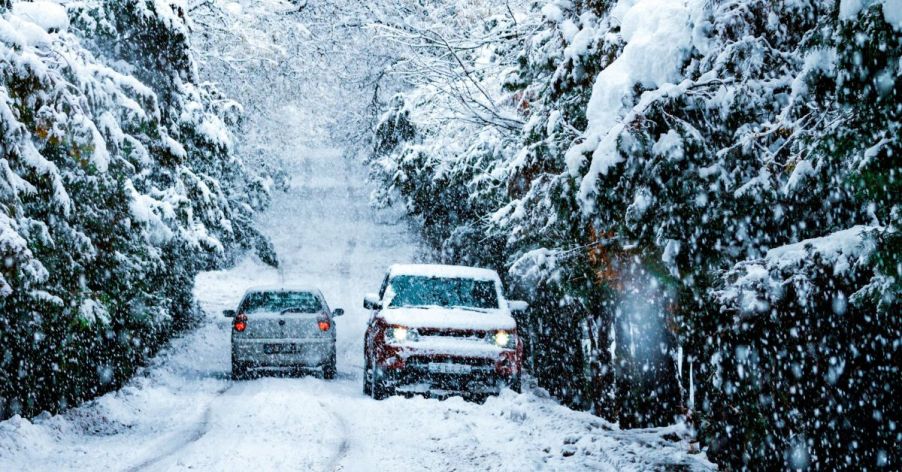
What to Do When Faced With a Terrifying Driving Situation

Drivers are constantly faced with unforeseen circumstances on the road, sometimes daily. If not handled well, these situations can lead to tragic accidents, causing damages, injuries, and sometimes, loss of life. Therefore, knowing how best to handle these situations can maximize your chances of survival.
Hydroplaning on Wet Roads

Hydroplaning occurs when a vehicle’s tires lose contact with the road surface and skid uncontrollably. This can happen during or after heavy rain. In such a situation, avoid sudden movements and do not hit the brakes. Slowly steer in the direction you want the car to go.
Brake Failure on a Steep Descent

A sudden brake failure could be due to the brake components overheating from excessive use. If this happens, downshift to a lower gear and pump the brakes repeatedly. Alternatively, you can use the emergency brake, drive into a runaway truck ramp, or an uphill incline.
Tire Blowout at High Speeds

Having a sudden tire blowout at high speeds can make the car swerve or spin out of control. In this case, don’t slam the brakes. Instead, firmly grip the steering wheel and gently ease off the accelerator. Then, allow the vehicle to slow down while steering it to the roadside.
Deer or Other Wildlife Crossing

Wildlife, such as deer, often dart across roads, especially during dawn and dusk. Therefore, stay alert in wildlife-prone areas and reduce your speed when you see warning signs. If an animal dashes unexpectedly into the road, brake firmly but avoid swerving.
Engine Overheating in Traffic

Don’t open the radiator cap if your engine overheats when stuck in heavy traffic. Instead, turn off the air conditioning and turn on the heater. Next, pull over and turn off the engine. Also, check the coolant level; if it’s low, refill it after the engine cools down.
Skidding on Black Ice

Black ice, which is a transparent ice layer on the road, can cause your car to skid if you drive over it. To manage this, keep your steering wheel steady and avoid braking or accelerating. Preferably, lift your foot off the gas pedal and allow the car to drift until you regain traction.
Power Steering Issues

A breakdown of the power steering system can make the vehicle harder to steer. If this happens while you’re driving, remain calm and use more effort to steer the car. Pull over to the roadside and check for any signs of fluid leakage or electrical issues.
Head-On Collision Avoidance

Head-on collisions often come about when a driver drifts into oncoming traffic or attempts to pass on a two-lane road. When you see an oncoming vehicle in your lane, immediately slow down and steer to the right. Drive off the road onto the shoulder or into a ditch if necessary.
Fog-Induced Zero Visibility

While driving in dense fog, slow down and turn on your low-beam headlights or fog lights—high beams reflect off the fog and worsen visibility. Use road markings to guide your path, and if conditions become too dangerous, pull over to a safe spot and wait for the fog to clear.
Sudden Acceleration from a Stuck Throttle

A stuck throttle is often caused by mechanical failures or debris jamming the accelerator. When this happens, shift into neutral, apply the brakes steadily, and pull over. Do not turn off the engine until the car stops, or you will lose power steering and braking assistance.
Flash Floods on the Road

Flash floods can occur suddenly during heavy rainfall or storms. At such times, don’t drive through the flood, but find an alternate route. However, if you’re caught in the flood, abandon the car once the water rises above the bottom of the doors and seek higher ground.
Facing High Winds

Strong crosswinds can push your car sideways, especially in open areas or bridges. When faced with high winds, keep both hands on the wheel and reduce your speed. Be cautious when passing large vehicles that may sway in the wind.
Driving in a Sudden Hailstorm

Hailstorms may strike with little warning, and hail could damage your car. If caught in a hailstorm, pull over to the side of the road or under shelter if available. Stay inside the vehicle and avoid driving, as hail can make roads slippery, and the noise can distract you.
Being Tailgated by an Aggressive Driver

Don’t get tense if you notice an aggressive driver tailgating you. Avoid any sudden braking, as this could lead to a rear-end collision. Also, do not speed up. Preferably, maintain a steady speed and, if possible, move into another lane or slow down to let the aggressor pass.
Driving in a Blizzard

Blizzards bring heavy snow, high winds, and near-zero visibility. If you must drive during a blizzard, reduce your speed significantly and increase your distance from other vehicles. Switch on your low-beam headlights and fog lights to improve visibility.


